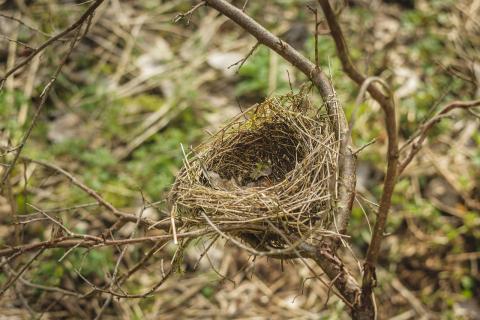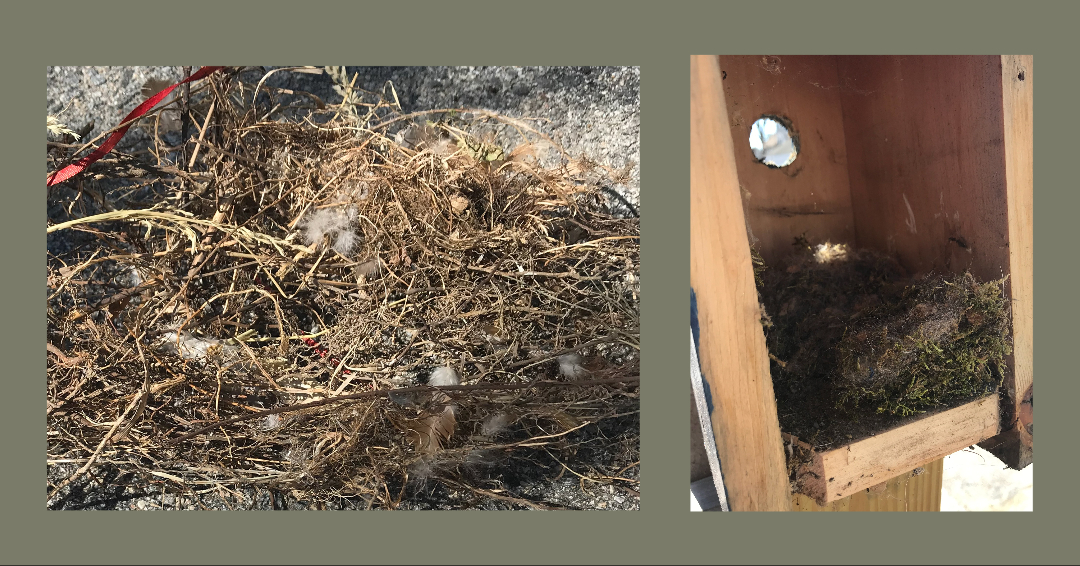Out For Another Walk? Try Identifying Nests in Your Neighborhood

When working or learning from home, observing the outdoors can help keep you positive, especially during times of self-isolation.
During the summer months when leaves block branches, you can’t really see the miracles that hide in the bushes and trees of urban environments. But before the leaves starting bursting, you can see many signs of life. Many bird species can make even tiny yards their home in busy neighborhoods within cities.
While outside for a walk, look around and you may find that there are clumps of leaves and twigs in the nook of branches or delicate grasses weaved together to form a small cup or, if you are lucky, a gray conical-shaped wasp nest hanging off a branch above the street. If you happen to have bird houses, open them up and you may discover what was housed there last summer or even this past winter.
We may think of STEM as only building machines, coding computer programs, 3D printing models and controlling robots. But let’s not forget that “S” is the first letter in STEM and that encompasses Science, which includes the natural world around us. As a family or as individuals you can engage in the natural world and build observation skills, which is part of utilizing Science Practices, which encourages us to think as scientists.
If you’re itching to get out of the house, but need to keep a safe distance, grab a pencil and some paper and choose your favorite walking route through the neighborhood. Mark the date on your paper and write a description of the weather.
As you are walking, stop at any tree or bush and take a closer look in the branches. At this point in the year, there will be many birds actively building new nests, but there will also be older nests that have been abandoned. Mark in journal where you found the nest, what it looks like, what it is made from and, if you can peer inside, what is inside it.
Continue along your walk, taking note of nests and if you notice any animals around them. If you have a camera, take a picture of the nests. Once back at home, if you have internet access, look up bird/animal nests and see if you can identify what animal/bird made that type of nest. As spring progresses, continue observing the nests you first encountered and take note of whether they are being used or if they remain empty.
You might notice squirrels crawling into leafy masses in the top of maple trees or notice house sparrows bouncing along wires to their messy nests in the eave of a neighbor’s home or a see a bright red cardinal guarding an old robin’s nest as their new abode. Enjoy the wonder of exploring your neighborhood and all the creatures who are building homes next to yours!
